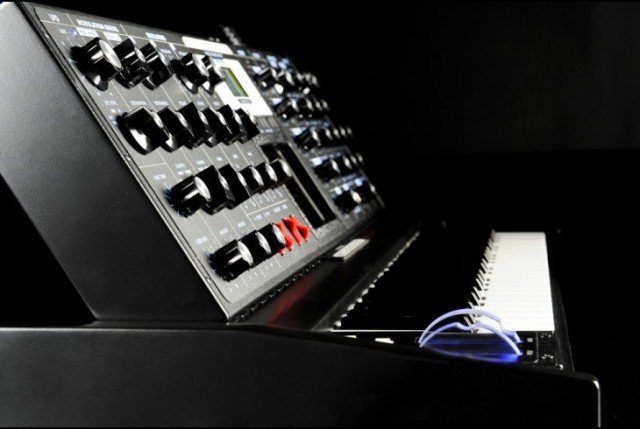Why is The Moogist playing in a pantry? It’s … unclear. (mmmm… Vanilla Almond Clusters.)
But this performer, aka Tim Tsang, demonstrates that with some modulation, you can turn you keyboard shredding into something much wilder. Expect explosive flurries of atonal melodic flourishes and timbral mayhem. Using a Moog Voyager, he modulates those pitches into some musical insanity. In short:
- Shred.
- Add pitch randomization with sample and hold (a lot of it).
- Filter the result.
- Hold that key trigger so you can use your fingers for something else. (Here, the Voyager’s X/Y pad.
- Route mod wheel to LFO.
- Route LFO to pitch, add more triggering, timbral modification like FM …and go all wobbly.
(Before you make assumptions, don’t miss the same performer nailing Liszt. Liszt would have loved the Minimoog, too, I think.)
I’m not sure there are quite ten tips in there, but you’ll see how to dazzle fans and frighten small children and pets. Come to think of it… okay, maybe I do know how he wound up in the pantry. But with gentle acoustics and plenty of snacks, it’s not a terrible idea. I’m counting that as a tip.
Enjoy … crunch. (Those clusters really are tasty.)
If that doesn’t strike your fancy, here’s another video in which The Moogist takes on external input:
Using Moog Voyager to process audio track with additional sounds. plays like a turntable.
Excerpt from the Moog Voyager Training DVD used by permission of Moog Music Inc.
By the way, one thing that’s great about Tim Tsang is that he doesn’t just shred on the keyboard. The man can also play Classical piano. And that kind of versatility – from the Classical to the mad and experimental – is something that marks a musician who can appreciate all kinds of beauty in music, not just through a narrow aperture but the whole lens of possibility. Watch:
